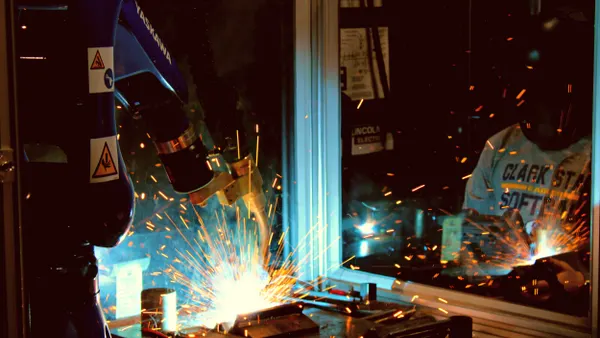Principal for a Day is probably the earliest form of job shadowing American kids were exposed to, likely followed by job shadowing programs in high school. But real job shadowing opportunities have taken on a new twist, giving potential applicants a deeper look into what it's like to walk the walk in some careers.
For employers, job shadowing is an investment in the future. Carving out time to meet with young people (or those interested in a new career path) doesn't pay immediately, but the branding boost and the potential pipeline of talent it can create may make it a worthwhile endeavor.
In the corporate world, job shadowing typically involves college students. Such programs can be as short as a day or as long as a week and can include any level of staff, from the C-suite to the front lines. The aim is to provide a taste of what it's like to work in that role. Shadowing a CEO to see what it's like to be in charge may help inform workers long-term goals, while following an entry-level worker provides insight into what it's like to step into a role right out of college. At whatever level, there's knowledge to be gained.
Building brand awareness
Trisha Degg, VP of talent programs and operations at Illinois Technology Association, believes job shadowing programs can provide more benefits for employers than many may realize. For example, many companies recognize that growing their brand awareness is a key priority for improving recruitment. If a company is known as a retail giant, computer science or supply chain majors may not consider the opportunities that company has to offer — even if their specialties are integral to what the company does day-to-day. Shadowing can help.
“The high school and university job shadow program can build brand awareness with your future workforce" in a long-term capacity, Degg said in an email.
Shadowing that pays dividends
Shadowing isn't just for students. Allowing employees to shadow others within the company can offer employees insight into moving into another role or department before they take the plunge and request a transfer. With so much emphasis on the need for cross-training and horizontal development, job shadowing may be a way to entice workers to expand their skill sets (and potentially stick around for the long-term) by giving them a chance to walk in their colleagues' shoes.
Employers could also open their doors to the community for job shadow days. Those interested could spend the day with a company to learn more about what it does and even gain insight into how they can become a part of the team. Degg suggested that employers consider such a day as an investment in corporate social responsibility as well as an enticement for applicants.
These companies, she said in an email, “are giving back to a community to support future talent. A company of 10 or 1,000 can host a job shadow day, if they see the long term value and show enthusiasm for the program.” Be invested, she added, and make sure the employees that participate understand the company goals – to boost community outreach, entice future staff and boast your company brand.
Where shadowing works well — and doesn't
Shadowing can be valuable in certain roles, but less so for others, Alexandra Connell, co-founder of Pluma, told HR Dive in an email. “Job shadowing is very useful for developing talent, but should mostly be used for roles where watching someone perform a task is more helpful than just telling them how a task is done,” she said. “If a role is mostly typing at a computer all day, shadowing won't be as valuable as a role that focuses on customer interfaces and other interpersonal interactions. Retail roles, hotels and restaurants and sales roles are great for shadowing.”
Showing a front-line employee the demands and rewards of moving up the ladder to management can be a powerful development and retention tool. For skilled trades roles, these programs can show learners how an individual's efforts contribute to larger goals.
Finding candidates
Connell suggested working with schools and nonprofits to find people interested in shadowing, but employers will want to pair them strategically. The same contacts who source interns may be interested in adding a job shadow component to the internship to give organizations and job seekers both a chance to look before they leap. “They are a great alternative or addition to any intern or apprentice program,” she said, “especially as a first step of 'seeing' before 'doing'.”
“Similarly,” she added, “you want to make sure that the employees who are shadowed are prepared for the 'show not tell' component that is crucial to shadowing, and that they are interested in developing others. A negative shadowing experience could backfire for both participant and the company.” HR might look for employees who are patient with others and enthusiastic about their work — aka, the company's best brand ambassadors.




















